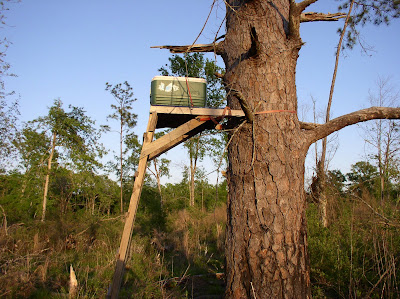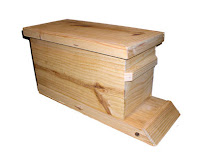First Aid in the Beeyard
4 months ago
For those who enjoy beekeeping as a backyard hobby.
 The second hive is a hive that I split from my hive at my residence. It is fairly slow to grow, but steadily improving. The last hive is a hive that I caught this year on the tree farm property. They are more italian breed type bee and they are growing fairly well. I built a metal hive stand that will hold 4 hives.
The second hive is a hive that I split from my hive at my residence. It is fairly slow to grow, but steadily improving. The last hive is a hive that I caught this year on the tree farm property. They are more italian breed type bee and they are growing fairly well. I built a metal hive stand that will hold 4 hives.
 Another view
Another view This is a make shift swarm catch hive made from a discarded ice chest.
This is a make shift swarm catch hive made from a discarded ice chest.





 Bees that made it through the winter.
Bees that made it through the winter.




 Temp rising. I usually smoke at anywhere from 225-250 degrees.
Temp rising. I usually smoke at anywhere from 225-250 degrees.






 bees actually stayed for years.
bees actually stayed for years.


